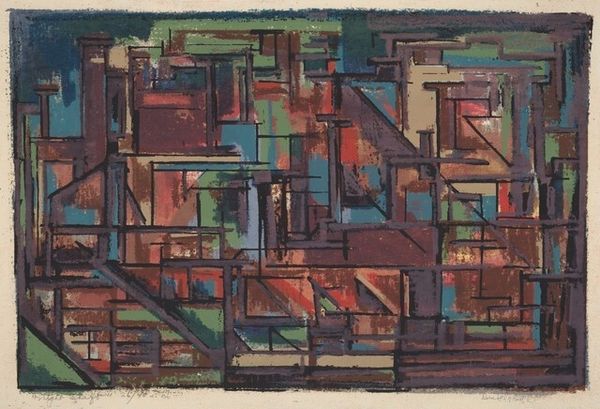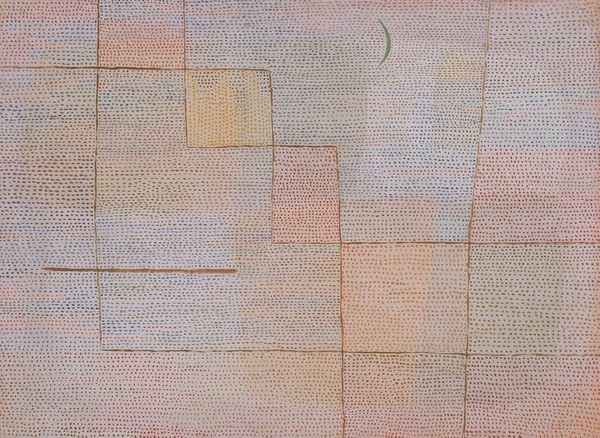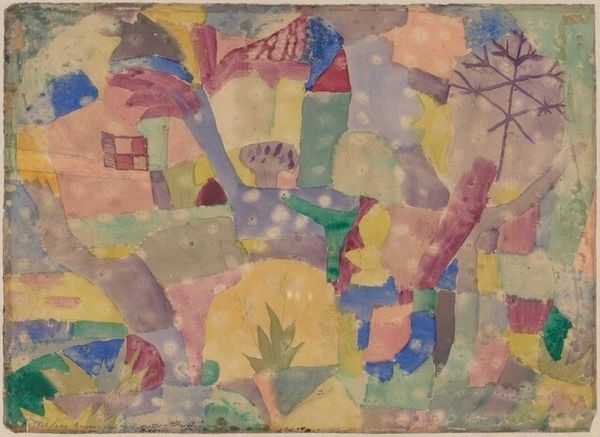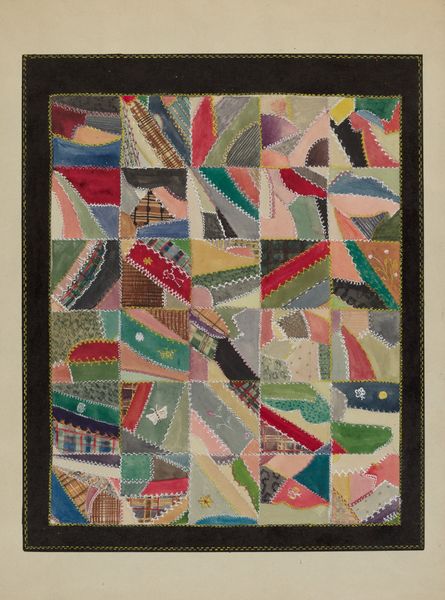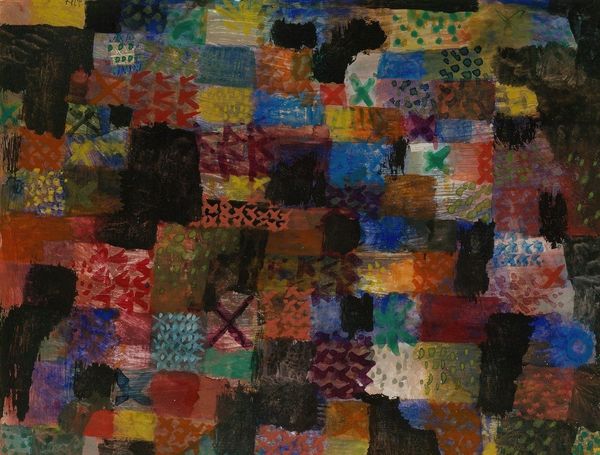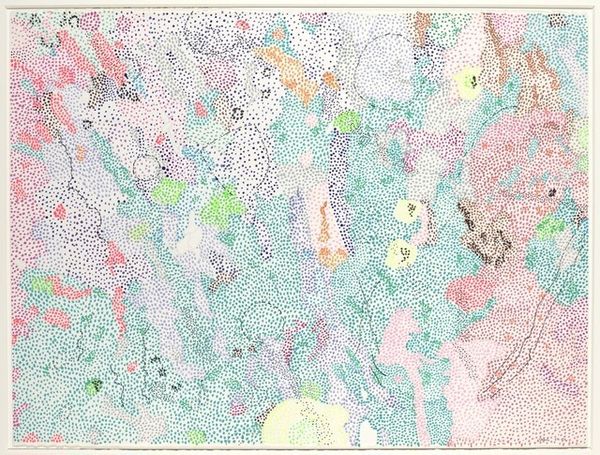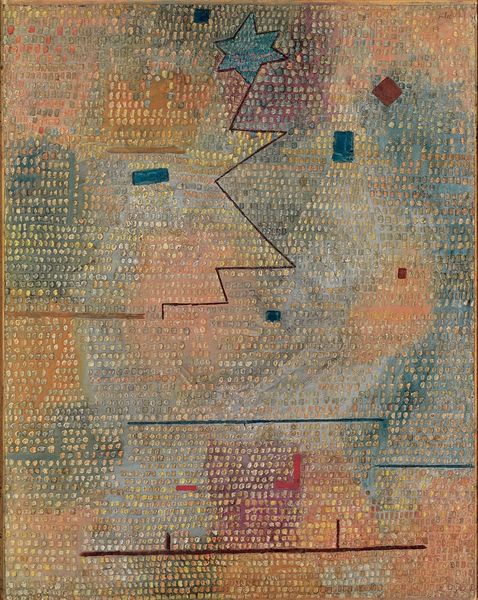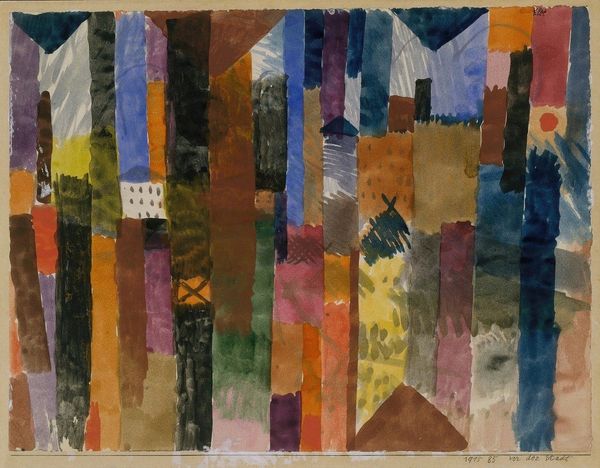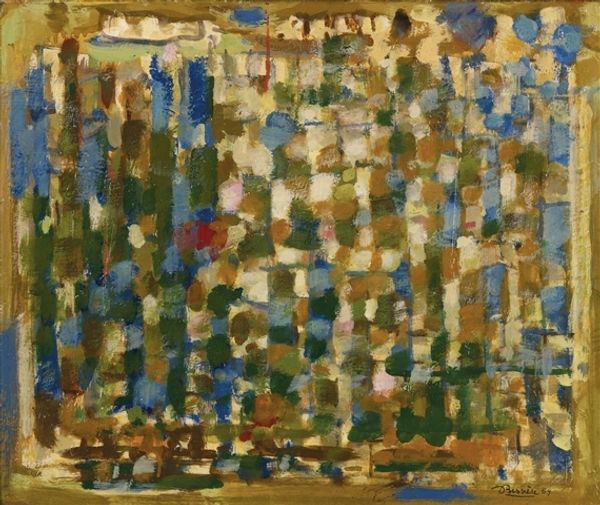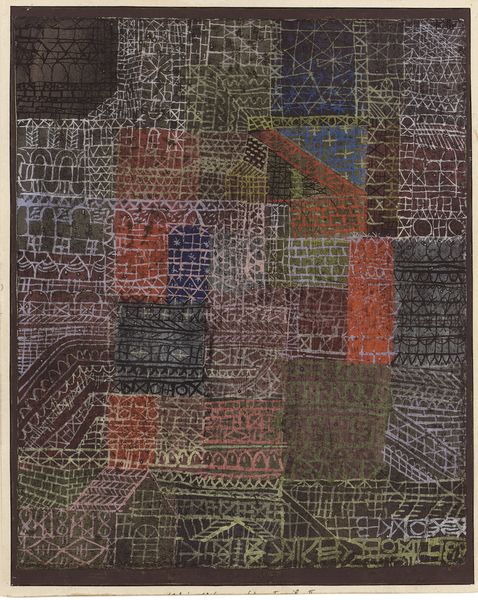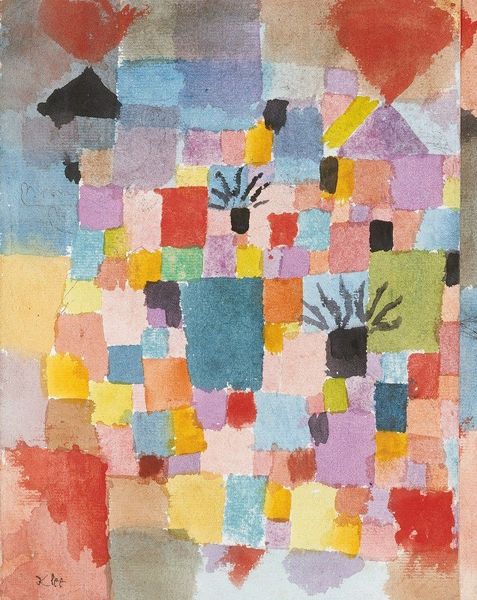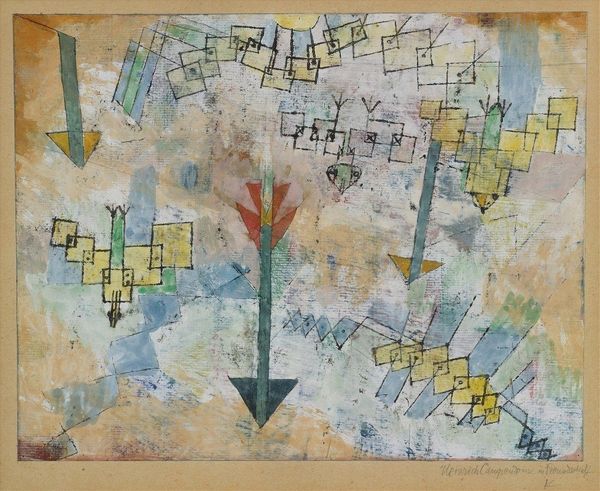
Copyright: Public Domain: Artvee
Editor: This is Paul Klee’s “Zwei Lustschlösschen,” created in 1918 using watercolor. It’s such a whimsical piece, with these soft pastel blocks forming an almost dreamlike cityscape. How do you interpret this work? Curator: Klee, in this piece, engages with the fracturing of identity and place that characterized the early 20th century. Note the delicate yet deliberate fracturing of space; it speaks to the destabilization felt in the wake of war, of shifting social and political landscapes. Editor: The way you describe it makes it seem less whimsical and more… unsettled. Curator: Exactly! Look at the title: "Two Pleasure Pavilions." Is that what you see? Or does the fragmentation hint at a more complex narrative? Consider the socio-political climate in 1918, the end of WWI. How might Klee be using these "pleasure pavilions" to comment on the societal desire for escapism in a time of great turmoil? Editor: I see what you mean. The soft colors could be masking something deeper, a sense of unease. The pavilions, rather than offering actual pleasure, might be symbols of a superficial distraction. Curator: Precisely. And who has access to "pleasure" and escapism? Klee's work prompts us to question the social structures that enable such retreats, while others bear the brunt of societal instability. The "pleasure pavilions" become less about enjoyment and more about social commentary, right? Editor: Right. The painting encourages me to question what I am really seeing and how art can reflect broader issues. Curator: And that interrogation is at the very heart of art and its enduring impact. Always look beneath the surface, and ask, 'Whose reality is being presented, and why?'
Comments
No comments
Be the first to comment and join the conversation on the ultimate creative platform.

